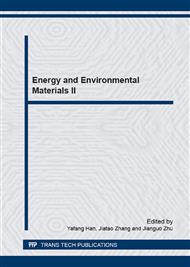p.249
p.256
p.262
p.268
p.273
p.278
p.286
p.292
p.298
Study on the Gold Leaching Process by Potassium Ferricyanide
Abstract:
The traditional gold leaching method is cyanidation, which carries serious security and environmental problems. More and more attention is paid to the research on non-cyanide process. A high-arsenic-and-sulphur refractory gold concentrate in Sichuan was taken as the object of study. After the roasting-oxidation pretreatment of the sample, potassium ferricyanide was adopted to carry on the process experiment on gold-leaching. The leaching results as well as correlative process conditions were both investigated. The results showed that good leaching effects could be achieved by potassium ferricyanide. When the amount of potassium ferricyanide was 60g/L, the concentration of NaOH 0.2mol/L, the liquid-solid ratio 6:1 and the leaching process at room temperature lasted for 20h, the gold leaching rate reached 88.1%. If the leaching aid CaO2 is added simultaneously, it can contribute to the gold leaching. When the amount of CaO2 was 3g/L, the gold leaching rate increased to more than 94%, the amount of potassium ferricyanide decreased to 50g/L and the leaching time reduced to 14h.
Info:
Periodical:
Pages:
273-277
Citation:
Online since:
March 2015
Authors:
Price:
Сopyright:
© 2015 Trans Tech Publications Ltd. All Rights Reserved
Share:
Citation:


